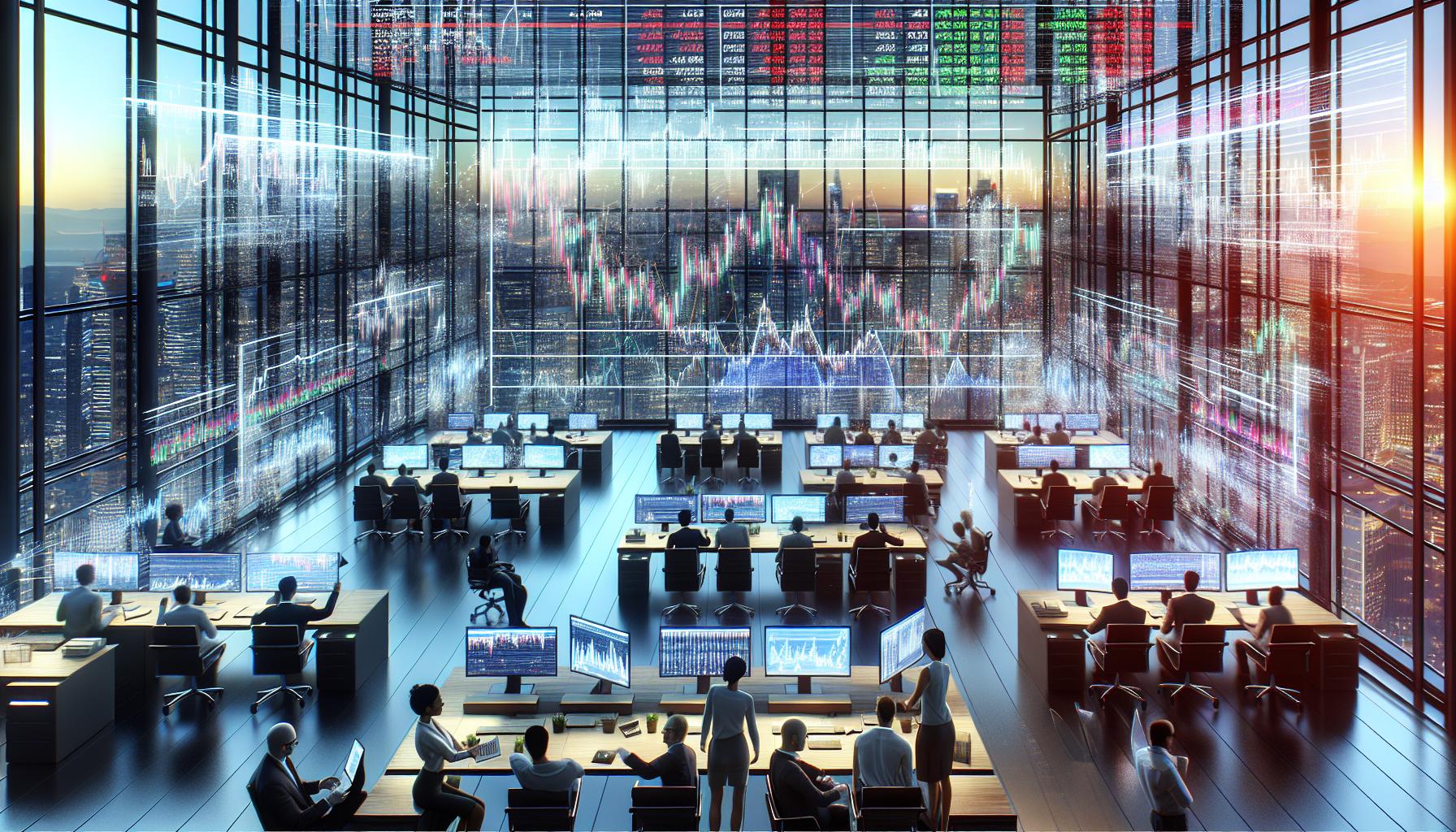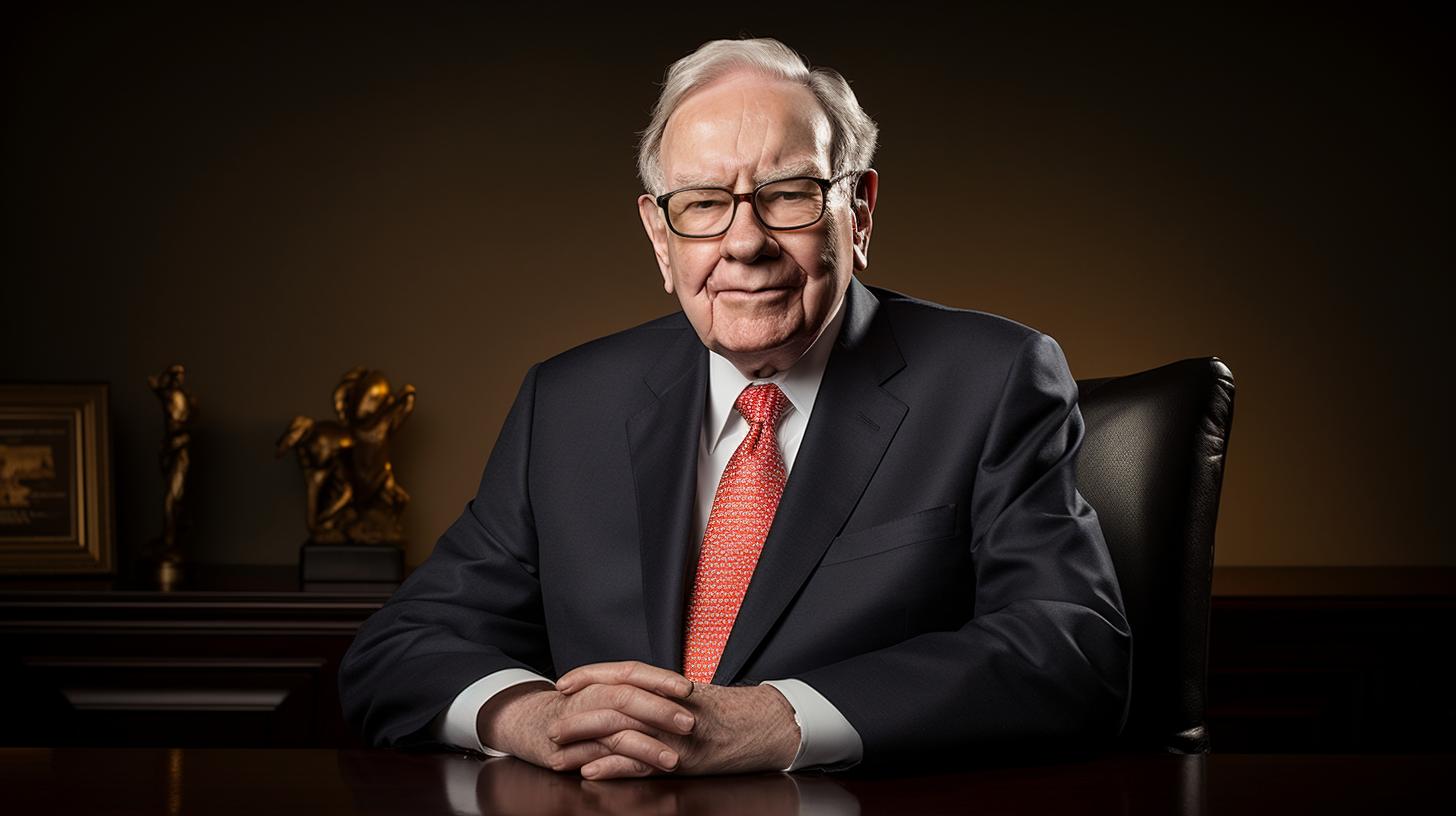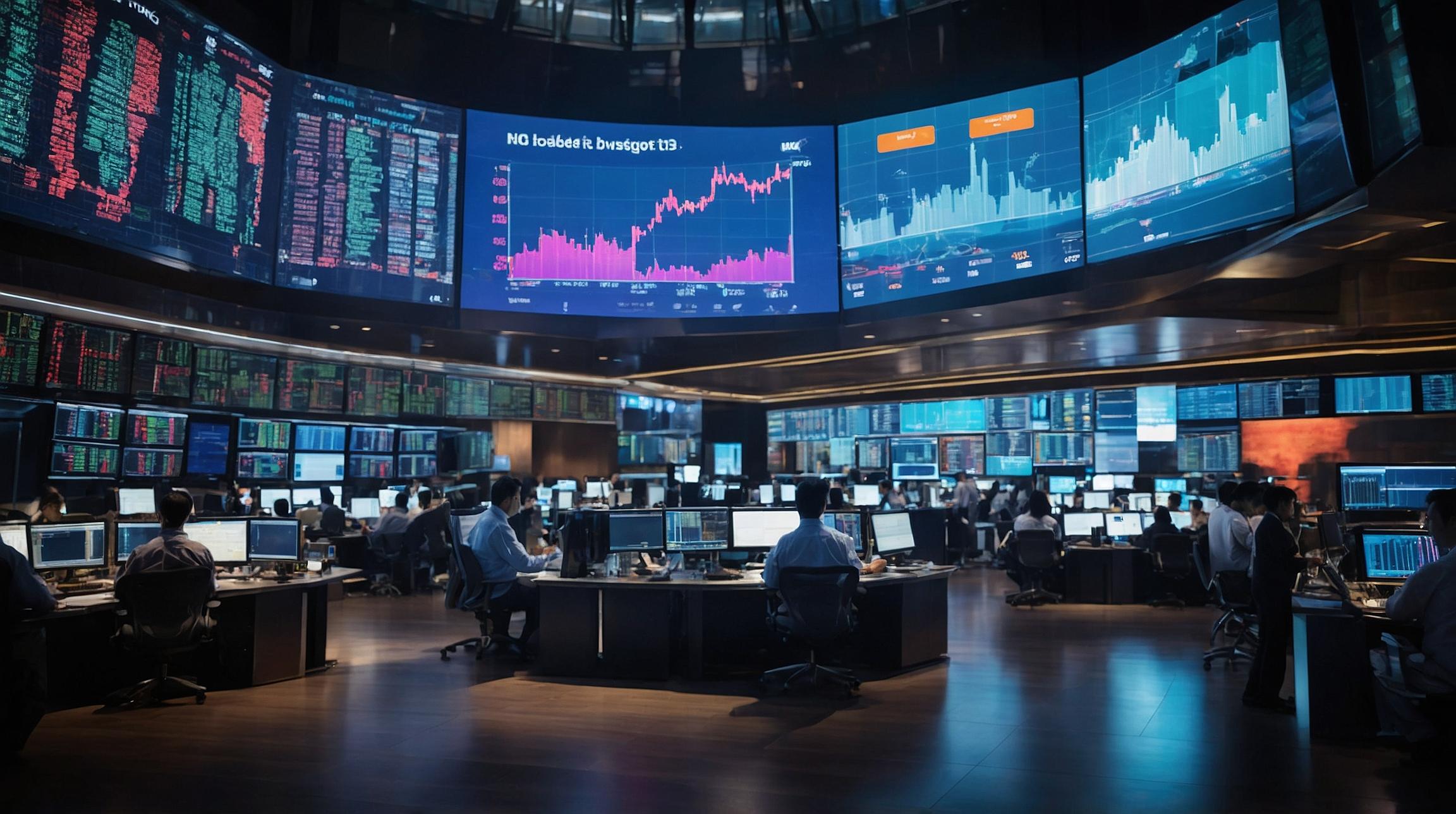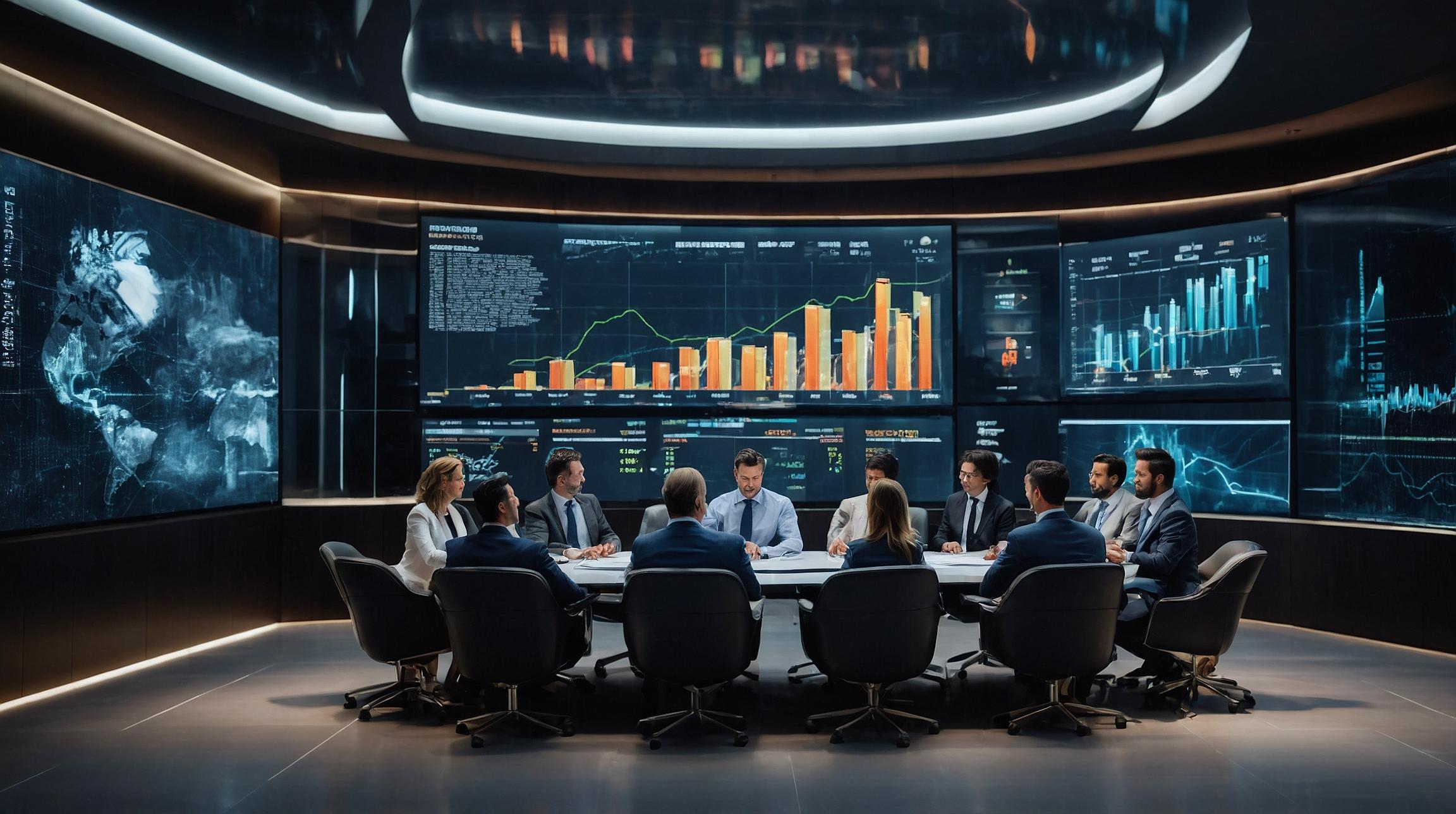The Middle East’s intensified engagement in critical minerals, particularly rare earths, signals a strategic shift in the global supply chain. Gulf states leverage capital and geopolitical positioning to establish a foothold in a market traditionally dominated by China. !-- wp:paragraph -->
Contents
FinOracleAI — Market ViewFinOracleAI — Market ViewIndustry Leaders Weigh In on Middle East’s RoleFinOracleAI — Market ViewIndustry Leaders Weigh In on Middle East’s RoleFinOracleAI — Market ViewIndustry Leaders Weigh In on Middle East’s RoleFinOracleAI — Market ViewGeopolitical Dynamics and Supply Chain ChallengesIndustry Leaders Weigh In on Middle East’s RoleFinOracleAI — Market ViewGeopolitical Dynamics and Supply Chain ChallengesIndustry Leaders Weigh In on Middle East’s RoleFinOracleAI — Market ViewArtificial Intelligence Drives Rare Earths Demand in the Middle EastGeopolitical Dynamics and Supply Chain ChallengesIndustry Leaders Weigh In on Middle East’s RoleFinOracleAI — Market ViewArtificial Intelligence Drives Rare Earths Demand in the Middle EastGeopolitical Dynamics and Supply Chain ChallengesIndustry Leaders Weigh In on Middle East’s RoleFinOracleAI — Market ViewArtificial Intelligence Drives Rare Earths Demand in the Middle EastGeopolitical Dynamics and Supply Chain ChallengesIndustry Leaders Weigh In on Middle East’s RoleFinOracleAI — Market ViewGulf States’ Strategic Push to Capture Critical Minerals Market ShareArtificial Intelligence Drives Rare Earths Demand in the Middle EastGeopolitical Dynamics and Supply Chain ChallengesIndustry Leaders Weigh In on Middle East’s RoleFinOracleAI — Market ViewGulf States’ Strategic Push to Capture Critical Minerals Market ShareArtificial Intelligence Drives Rare Earths Demand in the Middle EastGeopolitical Dynamics and Supply Chain ChallengesIndustry Leaders Weigh In on Middle East’s RoleFinOracleAI — Market ViewMiddle East Emerges as a Key Investor in Rare Earths SectorGulf States’ Strategic Push to Capture Critical Minerals Market ShareArtificial Intelligence Drives Rare Earths Demand in the Middle EastGeopolitical Dynamics and Supply Chain ChallengesIndustry Leaders Weigh In on Middle East’s RoleFinOracleAI — Market View
- Opportunities: Expansion of downstream processing facilities, such as lithium hydroxide plants, enhances value capture within the region.
- Opportunities: Growing AI and robotics sectors fuel sustained demand for rare earth elements, supporting long-term investment viability.
- Risks: Dependence on foreign expertise and nascent mining infrastructure could delay meaningful production scale-up.
- Risks: Geopolitical concerns may limit Western appetite to replace Chinese supply dependence with Gulf sources.
- Risks: Market volatility linked to U.S.-China trade relations could impact investment flows and supply chain stability.
FinOracleAI — Market View
The Middle East’s intensified engagement in critical minerals, particularly rare earths, signals a strategic shift in the global supply chain. Gulf states leverage capital and geopolitical positioning to establish a foothold in a market traditionally dominated by China. !-- wp:paragraph -->- Opportunities: Expansion of downstream processing facilities, such as lithium hydroxide plants, enhances value capture within the region.
- Opportunities: Growing AI and robotics sectors fuel sustained demand for rare earth elements, supporting long-term investment viability.
- Risks: Dependence on foreign expertise and nascent mining infrastructure could delay meaningful production scale-up.
- Risks: Geopolitical concerns may limit Western appetite to replace Chinese supply dependence with Gulf sources.
- Risks: Market volatility linked to U.S.-China trade relations could impact investment flows and supply chain stability.
FinOracleAI — Market View
The Middle East’s intensified engagement in critical minerals, particularly rare earths, signals a strategic shift in the global supply chain. Gulf states leverage capital and geopolitical positioning to establish a foothold in a market traditionally dominated by China. !-- wp:paragraph -->- Opportunities: Expansion of downstream processing facilities, such as lithium hydroxide plants, enhances value capture within the region.
- Opportunities: Growing AI and robotics sectors fuel sustained demand for rare earth elements, supporting long-term investment viability.
- Risks: Dependence on foreign expertise and nascent mining infrastructure could delay meaningful production scale-up.
- Risks: Geopolitical concerns may limit Western appetite to replace Chinese supply dependence with Gulf sources.
- Risks: Market volatility linked to U.S.-China trade relations could impact investment flows and supply chain stability.
Industry Leaders Weigh In on Middle East’s Role
Shaun Bunn, managing director of Empire Metals, highlighted the Kingdom of Saudi Arabia’s strategic diversification away from oil, with rare earths and critical minerals seen as key sectors for future growth. !-- wp:paragraph --> Despite the challenges, industry experts regard the Middle East’s financial muscle and strategic partnerships as essential to reshaping the global critical minerals landscape. !-- wp:paragraph -->FinOracleAI — Market View
The Middle East’s intensified engagement in critical minerals, particularly rare earths, signals a strategic shift in the global supply chain. Gulf states leverage capital and geopolitical positioning to establish a foothold in a market traditionally dominated by China. !-- wp:paragraph -->- Opportunities: Expansion of downstream processing facilities, such as lithium hydroxide plants, enhances value capture within the region.
- Opportunities: Growing AI and robotics sectors fuel sustained demand for rare earth elements, supporting long-term investment viability.
- Risks: Dependence on foreign expertise and nascent mining infrastructure could delay meaningful production scale-up.
- Risks: Geopolitical concerns may limit Western appetite to replace Chinese supply dependence with Gulf sources.
- Risks: Market volatility linked to U.S.-China trade relations could impact investment flows and supply chain stability.
Industry Leaders Weigh In on Middle East’s Role
Shaun Bunn, managing director of Empire Metals, highlighted the Kingdom of Saudi Arabia’s strategic diversification away from oil, with rare earths and critical minerals seen as key sectors for future growth. !-- wp:paragraph --> Despite the challenges, industry experts regard the Middle East’s financial muscle and strategic partnerships as essential to reshaping the global critical minerals landscape. !-- wp:paragraph -->FinOracleAI — Market View
The Middle East’s intensified engagement in critical minerals, particularly rare earths, signals a strategic shift in the global supply chain. Gulf states leverage capital and geopolitical positioning to establish a foothold in a market traditionally dominated by China. !-- wp:paragraph -->- Opportunities: Expansion of downstream processing facilities, such as lithium hydroxide plants, enhances value capture within the region.
- Opportunities: Growing AI and robotics sectors fuel sustained demand for rare earth elements, supporting long-term investment viability.
- Risks: Dependence on foreign expertise and nascent mining infrastructure could delay meaningful production scale-up.
- Risks: Geopolitical concerns may limit Western appetite to replace Chinese supply dependence with Gulf sources.
- Risks: Market volatility linked to U.S.-China trade relations could impact investment flows and supply chain stability.
Industry Leaders Weigh In on Middle East’s Role
Shaun Bunn, managing director of Empire Metals, highlighted the Kingdom of Saudi Arabia’s strategic diversification away from oil, with rare earths and critical minerals seen as key sectors for future growth. !-- wp:paragraph --> Despite the challenges, industry experts regard the Middle East’s financial muscle and strategic partnerships as essential to reshaping the global critical minerals landscape. !-- wp:paragraph -->FinOracleAI — Market View
The Middle East’s intensified engagement in critical minerals, particularly rare earths, signals a strategic shift in the global supply chain. Gulf states leverage capital and geopolitical positioning to establish a foothold in a market traditionally dominated by China. !-- wp:paragraph -->- Opportunities: Expansion of downstream processing facilities, such as lithium hydroxide plants, enhances value capture within the region.
- Opportunities: Growing AI and robotics sectors fuel sustained demand for rare earth elements, supporting long-term investment viability.
- Risks: Dependence on foreign expertise and nascent mining infrastructure could delay meaningful production scale-up.
- Risks: Geopolitical concerns may limit Western appetite to replace Chinese supply dependence with Gulf sources.
- Risks: Market volatility linked to U.S.-China trade relations could impact investment flows and supply chain stability.
Geopolitical Dynamics and Supply Chain Challenges
Rare earth elements have become a focal point in U.S.-China trade tensions, with the U.S. seeking to reduce reliance on China, which currently controls around 70% of global rare earth production and 90% of processing capacity. !-- wp:paragraph --> While Gulf states aspire to challenge this dominance, analysts caution that most regional mining projects remain in nascent stages, dependent on foreign expertise and investment to scale production effectively. !-- wp:paragraph --> Asna Wajid, research analyst at IISS, notes that despite ambitions, Gulf countries may take years to develop capabilities sufficient to impact global supply chains significantly. Additionally, Western markets may hesitate to shift dependency from China to Gulf states due to existing strategic leverage exercised by these countries through oil and gas exports. !-- wp:paragraph -->Industry Leaders Weigh In on Middle East’s Role
Shaun Bunn, managing director of Empire Metals, highlighted the Kingdom of Saudi Arabia’s strategic diversification away from oil, with rare earths and critical minerals seen as key sectors for future growth. !-- wp:paragraph --> Despite the challenges, industry experts regard the Middle East’s financial muscle and strategic partnerships as essential to reshaping the global critical minerals landscape. !-- wp:paragraph -->FinOracleAI — Market View
The Middle East’s intensified engagement in critical minerals, particularly rare earths, signals a strategic shift in the global supply chain. Gulf states leverage capital and geopolitical positioning to establish a foothold in a market traditionally dominated by China. !-- wp:paragraph -->- Opportunities: Expansion of downstream processing facilities, such as lithium hydroxide plants, enhances value capture within the region.
- Opportunities: Growing AI and robotics sectors fuel sustained demand for rare earth elements, supporting long-term investment viability.
- Risks: Dependence on foreign expertise and nascent mining infrastructure could delay meaningful production scale-up.
- Risks: Geopolitical concerns may limit Western appetite to replace Chinese supply dependence with Gulf sources.
- Risks: Market volatility linked to U.S.-China trade relations could impact investment flows and supply chain stability.
Geopolitical Dynamics and Supply Chain Challenges
Rare earth elements have become a focal point in U.S.-China trade tensions, with the U.S. seeking to reduce reliance on China, which currently controls around 70% of global rare earth production and 90% of processing capacity. !-- wp:paragraph --> While Gulf states aspire to challenge this dominance, analysts caution that most regional mining projects remain in nascent stages, dependent on foreign expertise and investment to scale production effectively. !-- wp:paragraph --> Asna Wajid, research analyst at IISS, notes that despite ambitions, Gulf countries may take years to develop capabilities sufficient to impact global supply chains significantly. Additionally, Western markets may hesitate to shift dependency from China to Gulf states due to existing strategic leverage exercised by these countries through oil and gas exports. !-- wp:paragraph -->Industry Leaders Weigh In on Middle East’s Role
Shaun Bunn, managing director of Empire Metals, highlighted the Kingdom of Saudi Arabia’s strategic diversification away from oil, with rare earths and critical minerals seen as key sectors for future growth. !-- wp:paragraph --> Despite the challenges, industry experts regard the Middle East’s financial muscle and strategic partnerships as essential to reshaping the global critical minerals landscape. !-- wp:paragraph -->FinOracleAI — Market View
The Middle East’s intensified engagement in critical minerals, particularly rare earths, signals a strategic shift in the global supply chain. Gulf states leverage capital and geopolitical positioning to establish a foothold in a market traditionally dominated by China. !-- wp:paragraph -->- Opportunities: Expansion of downstream processing facilities, such as lithium hydroxide plants, enhances value capture within the region.
- Opportunities: Growing AI and robotics sectors fuel sustained demand for rare earth elements, supporting long-term investment viability.
- Risks: Dependence on foreign expertise and nascent mining infrastructure could delay meaningful production scale-up.
- Risks: Geopolitical concerns may limit Western appetite to replace Chinese supply dependence with Gulf sources.
- Risks: Market volatility linked to U.S.-China trade relations could impact investment flows and supply chain stability.
Artificial Intelligence Drives Rare Earths Demand in the Middle East
Kevin Das, senior technical consultant at New Frontier Minerals, linked the surge in Gulf interest to the anticipated boom in AI and robotics. “Every robot requires rare earth elements,” he explained, emphasizing that supply constraints will intensify as the technology sector expands. !-- wp:paragraph --> This growing demand reinforces the strategic importance of securing stable and diversified supply chains for rare earth minerals, which are integral to automotive, defense, and technology applications. !-- wp:paragraph -->Geopolitical Dynamics and Supply Chain Challenges
Rare earth elements have become a focal point in U.S.-China trade tensions, with the U.S. seeking to reduce reliance on China, which currently controls around 70% of global rare earth production and 90% of processing capacity. !-- wp:paragraph --> While Gulf states aspire to challenge this dominance, analysts caution that most regional mining projects remain in nascent stages, dependent on foreign expertise and investment to scale production effectively. !-- wp:paragraph --> Asna Wajid, research analyst at IISS, notes that despite ambitions, Gulf countries may take years to develop capabilities sufficient to impact global supply chains significantly. Additionally, Western markets may hesitate to shift dependency from China to Gulf states due to existing strategic leverage exercised by these countries through oil and gas exports. !-- wp:paragraph -->Industry Leaders Weigh In on Middle East’s Role
Shaun Bunn, managing director of Empire Metals, highlighted the Kingdom of Saudi Arabia’s strategic diversification away from oil, with rare earths and critical minerals seen as key sectors for future growth. !-- wp:paragraph --> Despite the challenges, industry experts regard the Middle East’s financial muscle and strategic partnerships as essential to reshaping the global critical minerals landscape. !-- wp:paragraph -->FinOracleAI — Market View
The Middle East’s intensified engagement in critical minerals, particularly rare earths, signals a strategic shift in the global supply chain. Gulf states leverage capital and geopolitical positioning to establish a foothold in a market traditionally dominated by China. !-- wp:paragraph -->- Opportunities: Expansion of downstream processing facilities, such as lithium hydroxide plants, enhances value capture within the region.
- Opportunities: Growing AI and robotics sectors fuel sustained demand for rare earth elements, supporting long-term investment viability.
- Risks: Dependence on foreign expertise and nascent mining infrastructure could delay meaningful production scale-up.
- Risks: Geopolitical concerns may limit Western appetite to replace Chinese supply dependence with Gulf sources.
- Risks: Market volatility linked to U.S.-China trade relations could impact investment flows and supply chain stability.
Artificial Intelligence Drives Rare Earths Demand in the Middle East
Kevin Das, senior technical consultant at New Frontier Minerals, linked the surge in Gulf interest to the anticipated boom in AI and robotics. “Every robot requires rare earth elements,” he explained, emphasizing that supply constraints will intensify as the technology sector expands. !-- wp:paragraph --> This growing demand reinforces the strategic importance of securing stable and diversified supply chains for rare earth minerals, which are integral to automotive, defense, and technology applications. !-- wp:paragraph -->Geopolitical Dynamics and Supply Chain Challenges
Rare earth elements have become a focal point in U.S.-China trade tensions, with the U.S. seeking to reduce reliance on China, which currently controls around 70% of global rare earth production and 90% of processing capacity. !-- wp:paragraph --> While Gulf states aspire to challenge this dominance, analysts caution that most regional mining projects remain in nascent stages, dependent on foreign expertise and investment to scale production effectively. !-- wp:paragraph --> Asna Wajid, research analyst at IISS, notes that despite ambitions, Gulf countries may take years to develop capabilities sufficient to impact global supply chains significantly. Additionally, Western markets may hesitate to shift dependency from China to Gulf states due to existing strategic leverage exercised by these countries through oil and gas exports. !-- wp:paragraph -->Industry Leaders Weigh In on Middle East’s Role
Shaun Bunn, managing director of Empire Metals, highlighted the Kingdom of Saudi Arabia’s strategic diversification away from oil, with rare earths and critical minerals seen as key sectors for future growth. !-- wp:paragraph --> Despite the challenges, industry experts regard the Middle East’s financial muscle and strategic partnerships as essential to reshaping the global critical minerals landscape. !-- wp:paragraph -->FinOracleAI — Market View
The Middle East’s intensified engagement in critical minerals, particularly rare earths, signals a strategic shift in the global supply chain. Gulf states leverage capital and geopolitical positioning to establish a foothold in a market traditionally dominated by China. !-- wp:paragraph -->- Opportunities: Expansion of downstream processing facilities, such as lithium hydroxide plants, enhances value capture within the region.
- Opportunities: Growing AI and robotics sectors fuel sustained demand for rare earth elements, supporting long-term investment viability.
- Risks: Dependence on foreign expertise and nascent mining infrastructure could delay meaningful production scale-up.
- Risks: Geopolitical concerns may limit Western appetite to replace Chinese supply dependence with Gulf sources.
- Risks: Market volatility linked to U.S.-China trade relations could impact investment flows and supply chain stability.
Artificial Intelligence Drives Rare Earths Demand in the Middle East
Kevin Das, senior technical consultant at New Frontier Minerals, linked the surge in Gulf interest to the anticipated boom in AI and robotics. “Every robot requires rare earth elements,” he explained, emphasizing that supply constraints will intensify as the technology sector expands. !-- wp:paragraph --> This growing demand reinforces the strategic importance of securing stable and diversified supply chains for rare earth minerals, which are integral to automotive, defense, and technology applications. !-- wp:paragraph -->Geopolitical Dynamics and Supply Chain Challenges
Rare earth elements have become a focal point in U.S.-China trade tensions, with the U.S. seeking to reduce reliance on China, which currently controls around 70% of global rare earth production and 90% of processing capacity. !-- wp:paragraph --> While Gulf states aspire to challenge this dominance, analysts caution that most regional mining projects remain in nascent stages, dependent on foreign expertise and investment to scale production effectively. !-- wp:paragraph --> Asna Wajid, research analyst at IISS, notes that despite ambitions, Gulf countries may take years to develop capabilities sufficient to impact global supply chains significantly. Additionally, Western markets may hesitate to shift dependency from China to Gulf states due to existing strategic leverage exercised by these countries through oil and gas exports. !-- wp:paragraph -->Industry Leaders Weigh In on Middle East’s Role
Shaun Bunn, managing director of Empire Metals, highlighted the Kingdom of Saudi Arabia’s strategic diversification away from oil, with rare earths and critical minerals seen as key sectors for future growth. !-- wp:paragraph --> Despite the challenges, industry experts regard the Middle East’s financial muscle and strategic partnerships as essential to reshaping the global critical minerals landscape. !-- wp:paragraph -->FinOracleAI — Market View
The Middle East’s intensified engagement in critical minerals, particularly rare earths, signals a strategic shift in the global supply chain. Gulf states leverage capital and geopolitical positioning to establish a foothold in a market traditionally dominated by China. !-- wp:paragraph -->- Opportunities: Expansion of downstream processing facilities, such as lithium hydroxide plants, enhances value capture within the region.
- Opportunities: Growing AI and robotics sectors fuel sustained demand for rare earth elements, supporting long-term investment viability.
- Risks: Dependence on foreign expertise and nascent mining infrastructure could delay meaningful production scale-up.
- Risks: Geopolitical concerns may limit Western appetite to replace Chinese supply dependence with Gulf sources.
- Risks: Market volatility linked to U.S.-China trade relations could impact investment flows and supply chain stability.
Gulf States’ Strategic Push to Capture Critical Minerals Market Share
At the Future Investment Initiative (FII) in Riyadh, dubbed “Davos in the Desert,” policymakers and business leaders convened to discuss growth frontiers including artificial intelligence and economic diversification. The event highlighted the Gulf states’ ambitions to leverage their financial resources and strategic geographic positioning to gain influence over critical minerals supply chains. !-- wp:paragraph --> According to the International Institute for Strategic Studies (IISS), Gulf countries are actively pursuing targeted acquisitions and international partnerships as part of their strategy to position themselves as alternative critical mineral suppliers to Western nations. !-- wp:paragraph --> A notable example is the partnership between Critical Metals and Saudi Arabia’s Obeikan Group to establish a large-scale lithium hydroxide processing facility within the kingdom, underscoring the region’s commitment to developing downstream capabilities. !-- wp:paragraph -->Artificial Intelligence Drives Rare Earths Demand in the Middle East
Kevin Das, senior technical consultant at New Frontier Minerals, linked the surge in Gulf interest to the anticipated boom in AI and robotics. “Every robot requires rare earth elements,” he explained, emphasizing that supply constraints will intensify as the technology sector expands. !-- wp:paragraph --> This growing demand reinforces the strategic importance of securing stable and diversified supply chains for rare earth minerals, which are integral to automotive, defense, and technology applications. !-- wp:paragraph -->Geopolitical Dynamics and Supply Chain Challenges
Rare earth elements have become a focal point in U.S.-China trade tensions, with the U.S. seeking to reduce reliance on China, which currently controls around 70% of global rare earth production and 90% of processing capacity. !-- wp:paragraph --> While Gulf states aspire to challenge this dominance, analysts caution that most regional mining projects remain in nascent stages, dependent on foreign expertise and investment to scale production effectively. !-- wp:paragraph --> Asna Wajid, research analyst at IISS, notes that despite ambitions, Gulf countries may take years to develop capabilities sufficient to impact global supply chains significantly. Additionally, Western markets may hesitate to shift dependency from China to Gulf states due to existing strategic leverage exercised by these countries through oil and gas exports. !-- wp:paragraph -->Industry Leaders Weigh In on Middle East’s Role
Shaun Bunn, managing director of Empire Metals, highlighted the Kingdom of Saudi Arabia’s strategic diversification away from oil, with rare earths and critical minerals seen as key sectors for future growth. !-- wp:paragraph --> Despite the challenges, industry experts regard the Middle East’s financial muscle and strategic partnerships as essential to reshaping the global critical minerals landscape. !-- wp:paragraph -->FinOracleAI — Market View
The Middle East’s intensified engagement in critical minerals, particularly rare earths, signals a strategic shift in the global supply chain. Gulf states leverage capital and geopolitical positioning to establish a foothold in a market traditionally dominated by China. !-- wp:paragraph -->- Opportunities: Expansion of downstream processing facilities, such as lithium hydroxide plants, enhances value capture within the region.
- Opportunities: Growing AI and robotics sectors fuel sustained demand for rare earth elements, supporting long-term investment viability.
- Risks: Dependence on foreign expertise and nascent mining infrastructure could delay meaningful production scale-up.
- Risks: Geopolitical concerns may limit Western appetite to replace Chinese supply dependence with Gulf sources.
- Risks: Market volatility linked to U.S.-China trade relations could impact investment flows and supply chain stability.
Gulf States’ Strategic Push to Capture Critical Minerals Market Share
At the Future Investment Initiative (FII) in Riyadh, dubbed “Davos in the Desert,” policymakers and business leaders convened to discuss growth frontiers including artificial intelligence and economic diversification. The event highlighted the Gulf states’ ambitions to leverage their financial resources and strategic geographic positioning to gain influence over critical minerals supply chains. !-- wp:paragraph --> According to the International Institute for Strategic Studies (IISS), Gulf countries are actively pursuing targeted acquisitions and international partnerships as part of their strategy to position themselves as alternative critical mineral suppliers to Western nations. !-- wp:paragraph --> A notable example is the partnership between Critical Metals and Saudi Arabia’s Obeikan Group to establish a large-scale lithium hydroxide processing facility within the kingdom, underscoring the region’s commitment to developing downstream capabilities. !-- wp:paragraph -->Artificial Intelligence Drives Rare Earths Demand in the Middle East
Kevin Das, senior technical consultant at New Frontier Minerals, linked the surge in Gulf interest to the anticipated boom in AI and robotics. “Every robot requires rare earth elements,” he explained, emphasizing that supply constraints will intensify as the technology sector expands. !-- wp:paragraph --> This growing demand reinforces the strategic importance of securing stable and diversified supply chains for rare earth minerals, which are integral to automotive, defense, and technology applications. !-- wp:paragraph -->Geopolitical Dynamics and Supply Chain Challenges
Rare earth elements have become a focal point in U.S.-China trade tensions, with the U.S. seeking to reduce reliance on China, which currently controls around 70% of global rare earth production and 90% of processing capacity. !-- wp:paragraph --> While Gulf states aspire to challenge this dominance, analysts caution that most regional mining projects remain in nascent stages, dependent on foreign expertise and investment to scale production effectively. !-- wp:paragraph --> Asna Wajid, research analyst at IISS, notes that despite ambitions, Gulf countries may take years to develop capabilities sufficient to impact global supply chains significantly. Additionally, Western markets may hesitate to shift dependency from China to Gulf states due to existing strategic leverage exercised by these countries through oil and gas exports. !-- wp:paragraph -->Industry Leaders Weigh In on Middle East’s Role
Shaun Bunn, managing director of Empire Metals, highlighted the Kingdom of Saudi Arabia’s strategic diversification away from oil, with rare earths and critical minerals seen as key sectors for future growth. !-- wp:paragraph --> Despite the challenges, industry experts regard the Middle East’s financial muscle and strategic partnerships as essential to reshaping the global critical minerals landscape. !-- wp:paragraph -->FinOracleAI — Market View
The Middle East’s intensified engagement in critical minerals, particularly rare earths, signals a strategic shift in the global supply chain. Gulf states leverage capital and geopolitical positioning to establish a foothold in a market traditionally dominated by China. !-- wp:paragraph -->- Opportunities: Expansion of downstream processing facilities, such as lithium hydroxide plants, enhances value capture within the region.
- Opportunities: Growing AI and robotics sectors fuel sustained demand for rare earth elements, supporting long-term investment viability.
- Risks: Dependence on foreign expertise and nascent mining infrastructure could delay meaningful production scale-up.
- Risks: Geopolitical concerns may limit Western appetite to replace Chinese supply dependence with Gulf sources.
- Risks: Market volatility linked to U.S.-China trade relations could impact investment flows and supply chain stability.
Middle East Emerges as a Key Investor in Rare Earths Sector
Mining executives report a remarkable surge in investor interest from the Middle East, particularly from Gulf Cooperation Council (GCC) countries, as they seek to expand their footprint in the critical minerals market. These minerals, essential to the global energy transition, include rare earth elements, lithium, cobalt, and nickel, which are vital for emerging technologies and green energy solutions. !-- wp:paragraph --> Tony Sage, CEO of U.S.-listed Critical Metals, described the Middle East’s appetite for rare earths as “phenomenal,” noting the region’s lack of mining deposits but strong desire to engage in downstream processing and market participation. !-- wp:paragraph -->Gulf States’ Strategic Push to Capture Critical Minerals Market Share
At the Future Investment Initiative (FII) in Riyadh, dubbed “Davos in the Desert,” policymakers and business leaders convened to discuss growth frontiers including artificial intelligence and economic diversification. The event highlighted the Gulf states’ ambitions to leverage their financial resources and strategic geographic positioning to gain influence over critical minerals supply chains. !-- wp:paragraph --> According to the International Institute for Strategic Studies (IISS), Gulf countries are actively pursuing targeted acquisitions and international partnerships as part of their strategy to position themselves as alternative critical mineral suppliers to Western nations. !-- wp:paragraph --> A notable example is the partnership between Critical Metals and Saudi Arabia’s Obeikan Group to establish a large-scale lithium hydroxide processing facility within the kingdom, underscoring the region’s commitment to developing downstream capabilities. !-- wp:paragraph -->Artificial Intelligence Drives Rare Earths Demand in the Middle East
Kevin Das, senior technical consultant at New Frontier Minerals, linked the surge in Gulf interest to the anticipated boom in AI and robotics. “Every robot requires rare earth elements,” he explained, emphasizing that supply constraints will intensify as the technology sector expands. !-- wp:paragraph --> This growing demand reinforces the strategic importance of securing stable and diversified supply chains for rare earth minerals, which are integral to automotive, defense, and technology applications. !-- wp:paragraph -->Geopolitical Dynamics and Supply Chain Challenges
Rare earth elements have become a focal point in U.S.-China trade tensions, with the U.S. seeking to reduce reliance on China, which currently controls around 70% of global rare earth production and 90% of processing capacity. !-- wp:paragraph --> While Gulf states aspire to challenge this dominance, analysts caution that most regional mining projects remain in nascent stages, dependent on foreign expertise and investment to scale production effectively. !-- wp:paragraph --> Asna Wajid, research analyst at IISS, notes that despite ambitions, Gulf countries may take years to develop capabilities sufficient to impact global supply chains significantly. Additionally, Western markets may hesitate to shift dependency from China to Gulf states due to existing strategic leverage exercised by these countries through oil and gas exports. !-- wp:paragraph -->Industry Leaders Weigh In on Middle East’s Role
Shaun Bunn, managing director of Empire Metals, highlighted the Kingdom of Saudi Arabia’s strategic diversification away from oil, with rare earths and critical minerals seen as key sectors for future growth. !-- wp:paragraph --> Despite the challenges, industry experts regard the Middle East’s financial muscle and strategic partnerships as essential to reshaping the global critical minerals landscape. !-- wp:paragraph -->FinOracleAI — Market View
The Middle East’s intensified engagement in critical minerals, particularly rare earths, signals a strategic shift in the global supply chain. Gulf states leverage capital and geopolitical positioning to establish a foothold in a market traditionally dominated by China. !-- wp:paragraph -->- Opportunities: Expansion of downstream processing facilities, such as lithium hydroxide plants, enhances value capture within the region.
- Opportunities: Growing AI and robotics sectors fuel sustained demand for rare earth elements, supporting long-term investment viability.
- Risks: Dependence on foreign expertise and nascent mining infrastructure could delay meaningful production scale-up.
- Risks: Geopolitical concerns may limit Western appetite to replace Chinese supply dependence with Gulf sources.
- Risks: Market volatility linked to U.S.-China trade relations could impact investment flows and supply chain stability.













